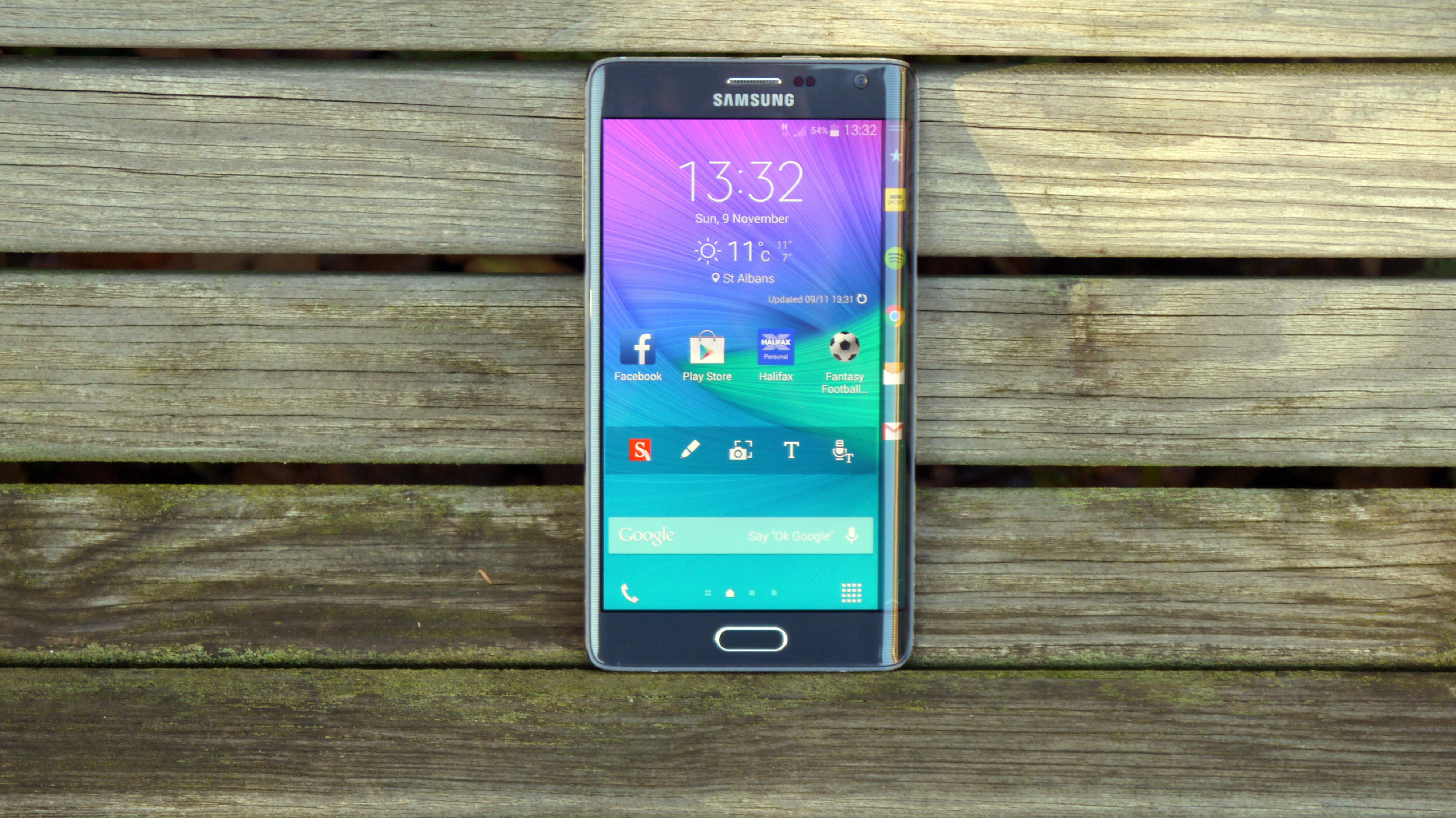Why you can trust TechRadar
The Samsung Galaxy Note Edge comes with Android 4.4.4 on board, the latest and last version of KitKat from Google.
There's only one newer iteration of the software available, Android 5.0 Lollipop, but that only recently broke into the market so it's no surprise the Note Edge isn't rocking the very latest sweet treat and it's likely to get an update to it soon.
Typically, Samsung has stuck its TouchWiz overlay on top of Android bringing a familiar look and feel to the device for anyone who has previously owned any of the firm's handsets.
In fact the interface on show here is almost identical to that of the Galaxy Note 4, with the only real difference being that chunk of curved display on the right and the additional functionality Samsung has built into it which I've already covered in the previous section.
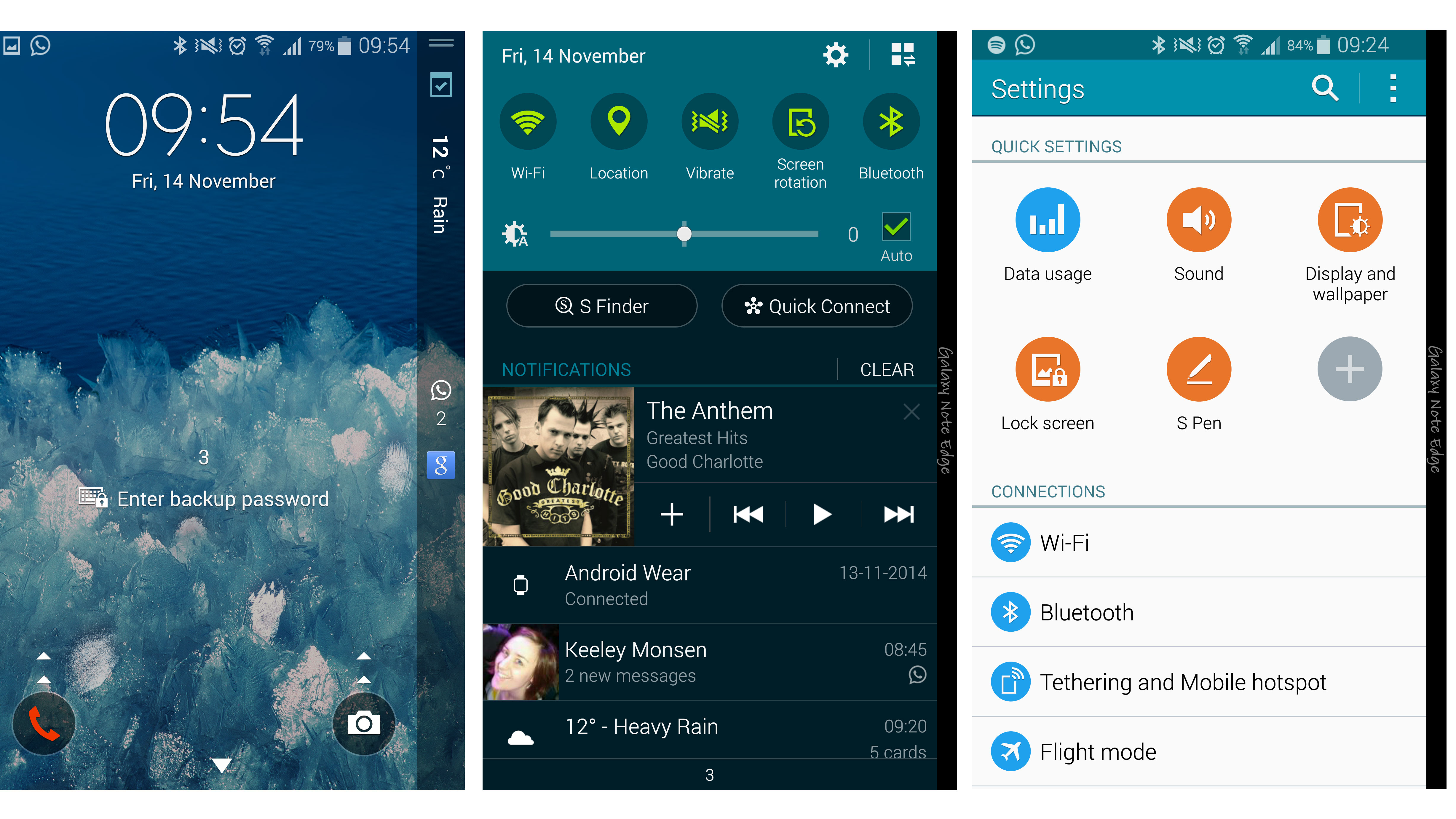
You can, if you wish, use the S Pen to navigate around the Note Edge, but it's just the same using your finger to swipe through the home screens, slide left on your default home page to enter the Flipboard news feed.
From the lock screen you can launch directly into the camera app by sliding up from the camera icon in the bottom right hand corner of the screen.
Standard Android security including pin, password and pattern are all available, plus Samsung has included its fingerprint scanner from the Galaxy S5, Galaxy Alpha and Note 4 under the physical home key.
Samsung has improved the accuracy of its fingerprint scanner since its introduction on the S5, but the system still doesn't perform to the same level as Apple's excellent Touch ID.
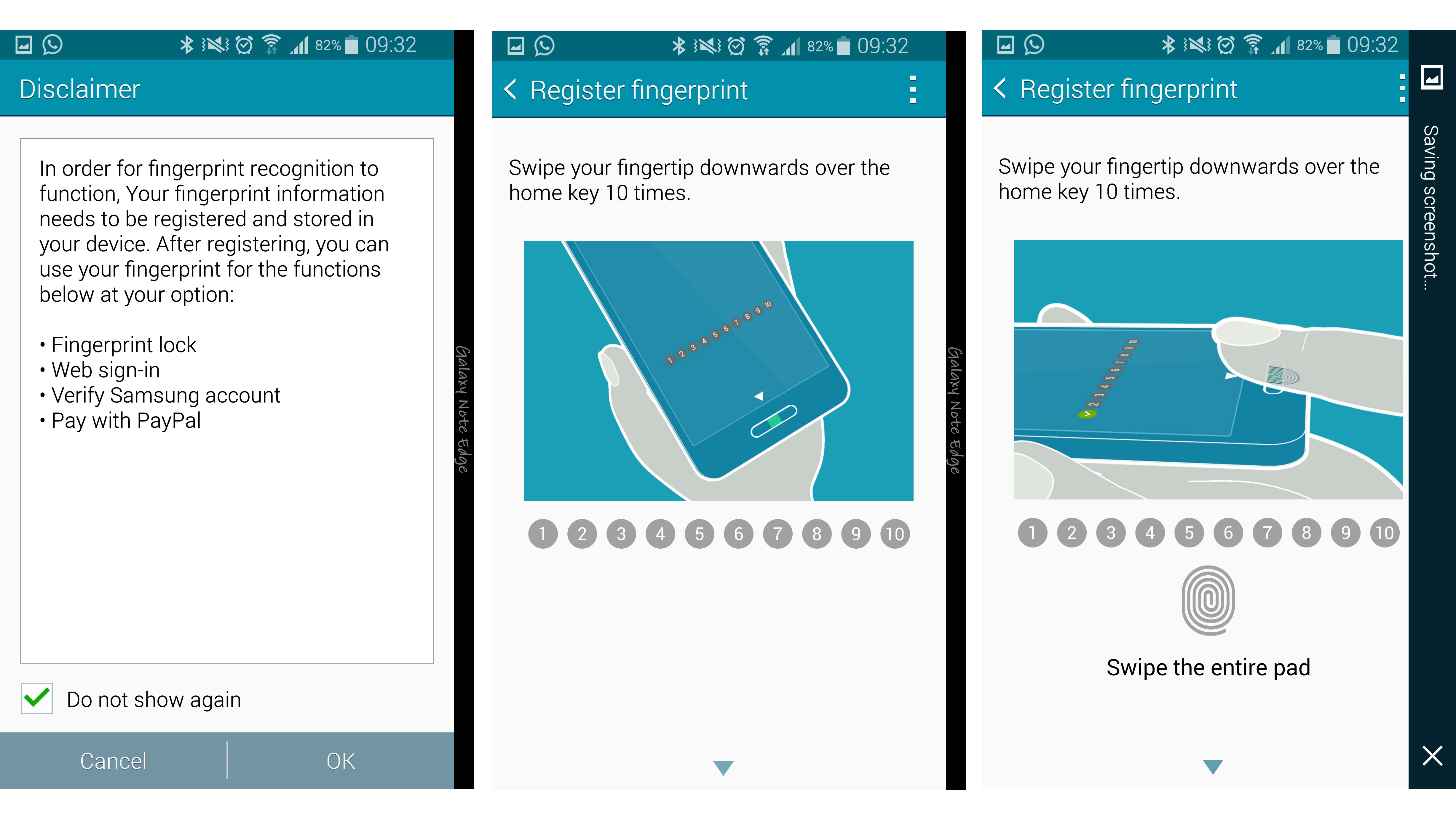
There were still regular occasions where I was required to swipe my finger multiple times to get the Note Edge to recognise my digit, making it a frustrating and time wasting practice. You'll be better off with a pin or pattern lock here.
Drag down from the top of the screen and you'll be greeted by the familiar Android notification bar sporting a row of customisable quick settings, a brightness slider and then quick links to S Finder and Quick Connect.
While the wide variety of functionality is welcome, it does mean around a third of the screen is taken up before you actually get to your notifications, which can be a little annoying if you're especially popular.
Hit the multi-tasking key below the screen and you'll be greeted with a series of cards showing the apps currently running in the background. You can easily scroll through these and close any you don't want anymore by swiping sideways over them.

You'll note that some of the apps have an icon in the top right corner, denoting the fact that they can be used in mulit-window. This is when you get two apps displayed side by side on screen.
Only a selection of applications are capable of doing this including; Internet, Messages, Maps, Facebook and WhatsApp.
You can also view the selection of multi-window applications by holding down on the back key to bring up a column of apps on the left of the screen.
It's a nice trick, but I didn't find myself using it all that often as switching between apps via the multi-tasking menu worked well enough for me.
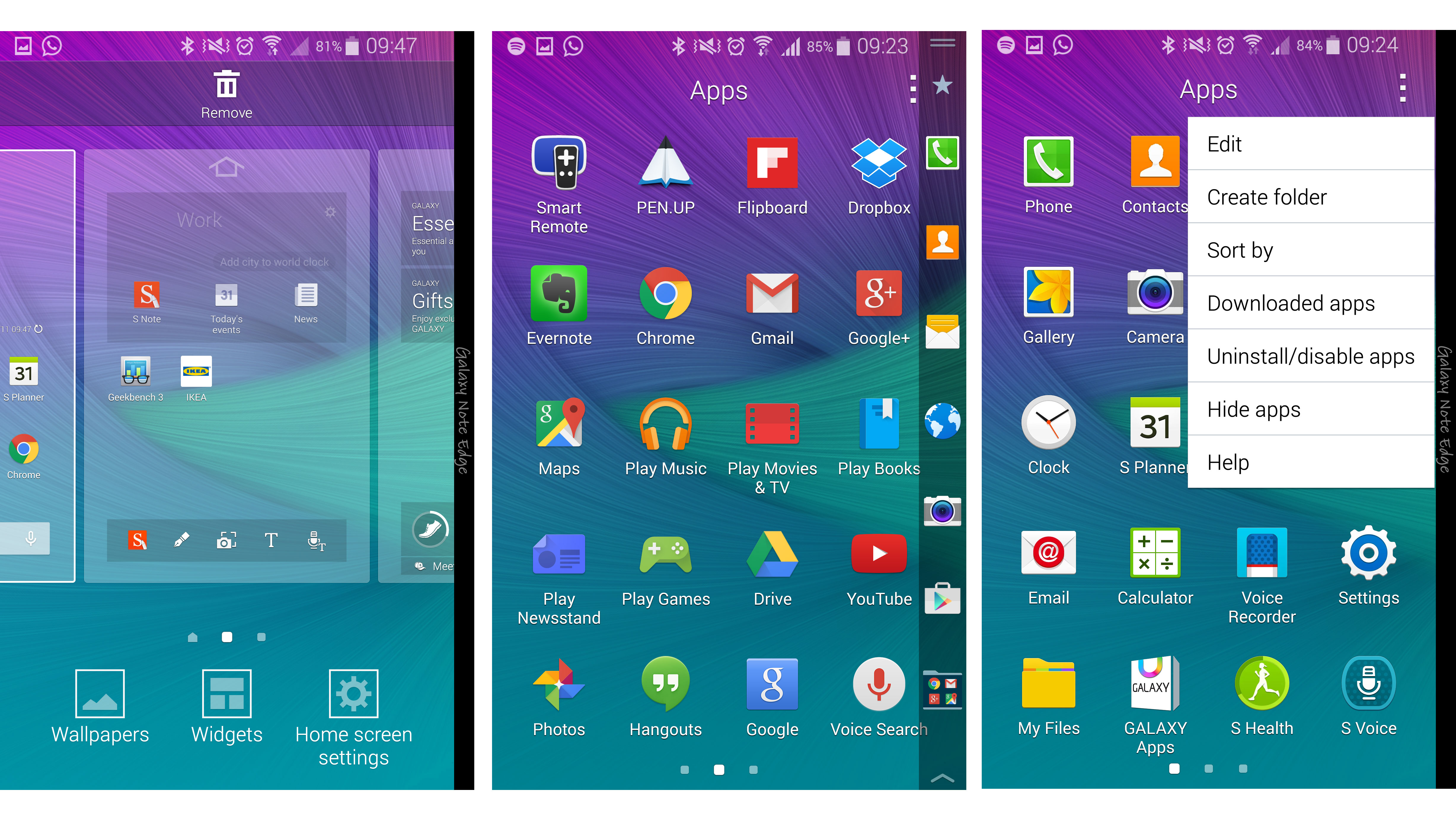
Samsung doesn't pre-install as many apps on its phones as it used to, and you'll have to venture to the Google Play store to download basics such as Facebook and Twitter, but it does make for a cleaner interface.
If you find there are offending applications which Samsung won't let you uninstall then you can always hide them from view via the drop down menu in the app list.
One app that Samsung does include is S Health, which works with the accelerometer built inside the Galaxy Note Edge as well as the heart rate monitor found on the back of the handset.
S Health lets you keep track of your fitness and exercise with simple monitors such as the built in pedometer to count your daily steps to more advanced functions such as tracking everything you eat, your weight, sleep and stress levels.
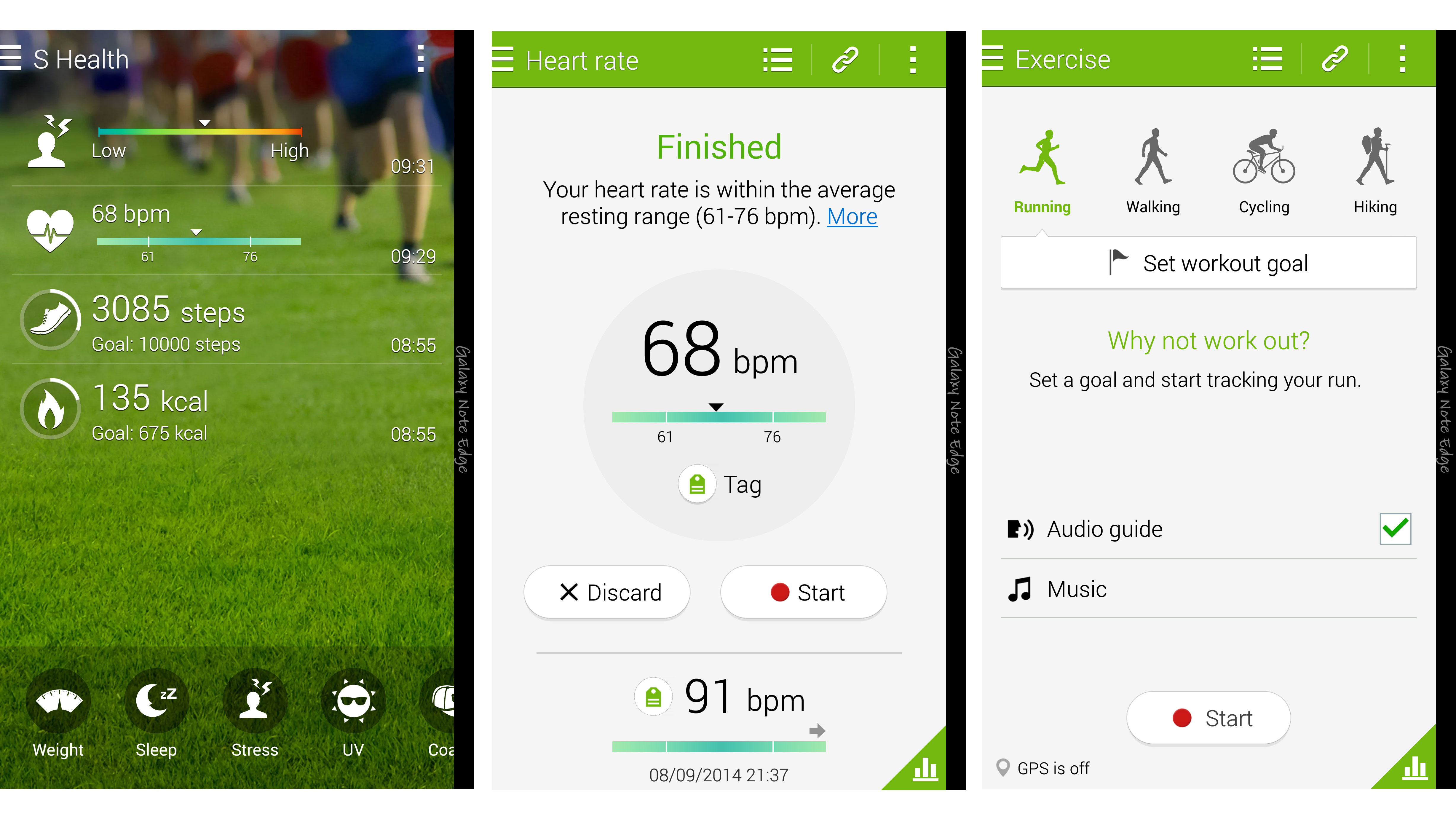
Using the heart rate monitor on the back you can keep track of your beat - although having to manually pull out the Note Edge and take the reading is a little counter intuitive.
The functionality works much better in wearable form, and the automatic monitoring by the Moto 360 is a far better example of the heart rate technology at work.
I found the step counter was okay, but sitting on the train I saw my steps jump up with the various shakes of the carriage, so you can't take the reading as gospel.
The Samsung Galaxy Note Edge isn't short of power, with its meaty 2.7GHz quad-core processor and 3GB of RAM matching the innards of the Galaxy Note 4.
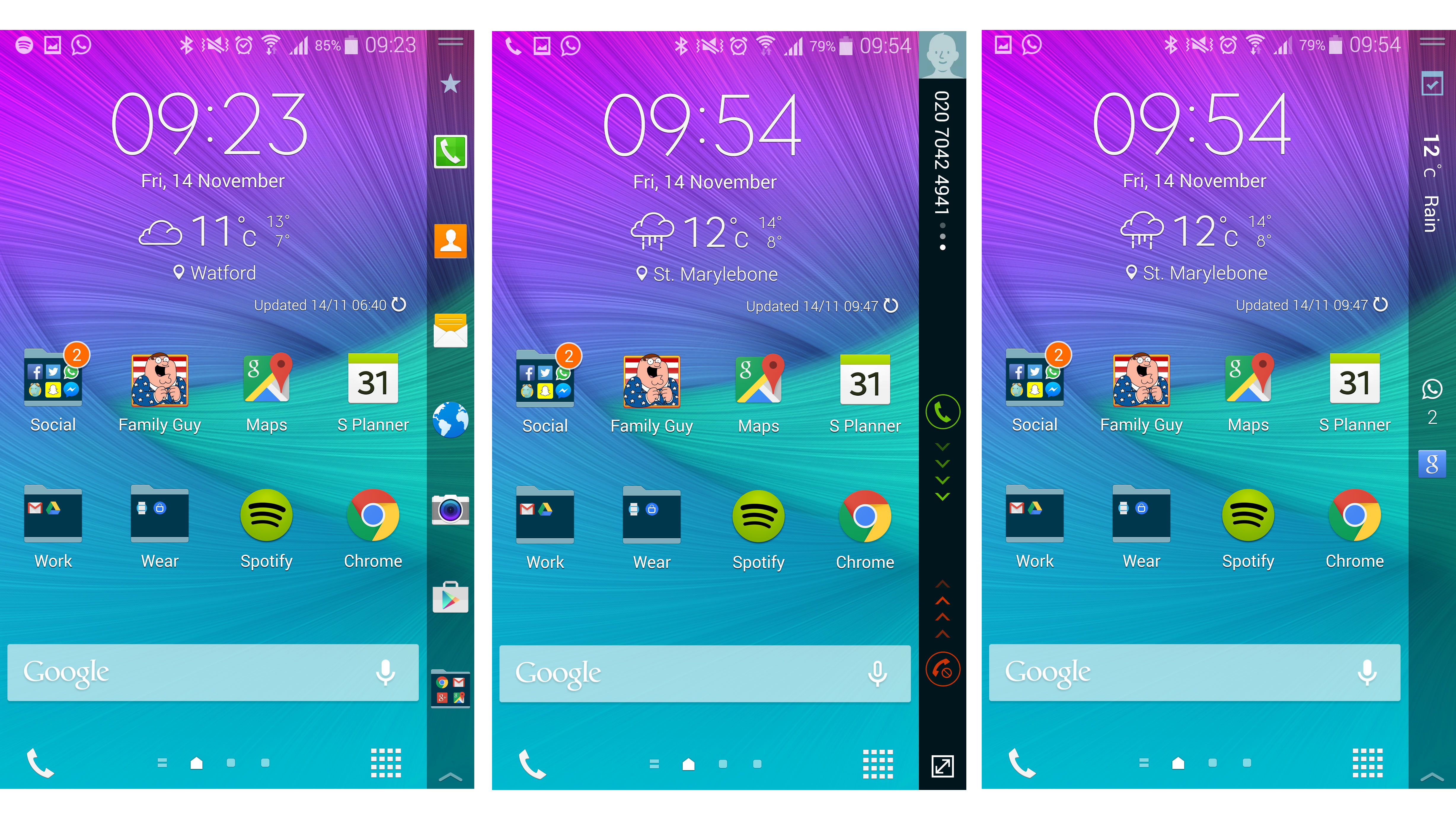
I ran Geekbench 3 several times on the Note Edge and on average the multi-core score came out at 3200 - slightly lower than the Note 4's 3351.
It comfortably beats LG's bendy G Flex (2067) and the 5.5-inch iPhone 6 Plus (2911) though, which means the Galaxy Note Edge is one of the most powerful smartphones on the market.
That power translates into a smooth interface, with apps loading promptly. The Note Edge has no trouble running multiple applications and you shouldn't need to think twice about opening up floating windows with the S Pen, as this phone can easily cope.
Some will still find Samsung's Android overlay a little overbearing, and various areas such as the settings menu are laid out differently to Google's offering which may put some off.
Spend a few days with the Galaxy Note Edge though and the interface becomes far more familiar and if you're able to get past the Samsung way of doing things then you're in for an enjoyable, slick experience.

TechRadar's former Global Managing Editor, John has been a technology journalist for more than a decade, and over the years has built up a vast knowledge of the tech industry. He’s interviewed CEOs from some of the world’s biggest tech firms, visited their HQs, and appeared on live TV and radio, including Sky News, BBC News, BBC World News, Al Jazeera, LBC, and BBC Radio 4.
